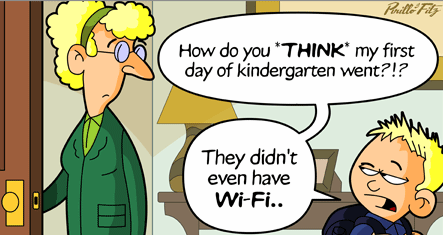Our world is becoming progressively digital. As we
move upward in the technological process, it becomes greatly important for all
individuals to become familiar with technology. Chapter five highlights many
technological concepts that are beneficial to both students and teachers to
enhance teaching and learning. The first concept of E-books and E-readers has
several positive aspects when used properly. The E-books eliminate the idea of
carrying heavy books and/or materials from one place to another. Digital access
is quicker and readily available. Further research material is also available
with the click of a few buttons to enhance your current material. E-access is
available on e-books, kindles, telephones, and computers. Although traditional
resources are still available, more individuals are choosing the electronic
devices due to the ease and unlimited information that can be acquired at once.
The next concept is to become fluent with
technology. To become fluent means to be able to navigate with ease and/or to
perfect something. A student with technology fluency navigates programs or apps
quickly, completing tasks correctly and deliberately. (Holland,2013).
There is an overabundance of interactive websites, learning games, and
other technologies that could be incorporated to enhance learning. Students
should be given choices to completing assignments given. Enhancing learning
with the fluency of technology provide students and teachers the ability to be
creative while thinking critically about topics. Students should be given time
to explore and share in and out of the classroom. This will give teachers a
better idea to know where students are and to meet them where they are when
teaching.
The third concept is electronic note-taking. There
are a number of note-taking devices that would be beneficial to both teachers
and students. It eliminates the possibility of losing notes or carrying around
a note-book. Electronic note-taking helps teachers access material readily.
Whether traditional or electronic, note-taking is an essential element for
learning and retention. It is also quicker to type notes instead of handwriting
them. Later on, notes can be easily edited or supplemented with additional
information.
In conclusion, this chapter highlighted many
concepts that are beneficial to both teachers and students in our digital world.
The chapter revealed the importance of becoming fluent with technology to
engage students and enhance the interactive process. Incorporating
technological material into the classroom gives students the ability learns new
concepts, explore freely, and share with others.
Sources:
Holland, B. (2013, December 16). Building Technology
Fluency: Preparing Students to be Digital Learners. Retrieved September 22,
2016, from http://www.edutopia.org/blog/building-tech-fluency-digital-learners-beth-holland
Maloy, R., O'Loughlin, R., Edwards, S., & Woolf,
B. (2013). Transforming Learning with New Technologies. 2nd
Edition. Boston, MA: Pearson Education Inc.
Tarver,J (2016, September 24). Created with ToonDoo www.ToonDoo.com screenshot
Tarver,J (2016, September 24). Created with ToonDoo www.ToonDoo.com screenshot

